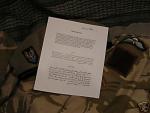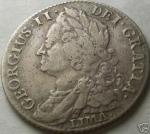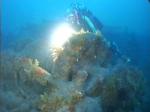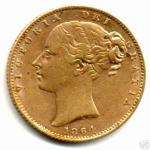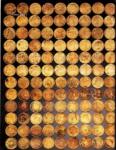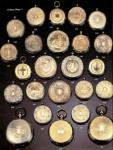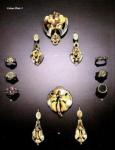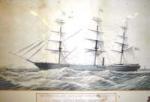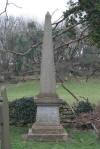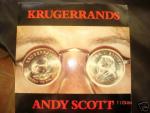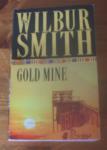-
Posts
208 -
Joined
-
Last visited
Content Type
Profiles
Forums
Blogs
Gallery
Events
Store
Everything posted by mariner
-
I think I right in saying that one of the coins is a gen uncirculated & the other has PCGS graded.
-
Anddwils, Did a bit a research on your seated liberty coins, your not joking about the prices of them are you!!!
-

Most valuable shipwreck 'found off Cornwall'
mariner replied to bigjarofwasps's topic in Coins & Commemorative Medallions
All seems to have gone very quiet in relation to this wreck, I assume all the coins are being cleaned up etc. I also assume that they`ll be a a big auction of them all in the future? Will have to start saving now, ho,ho,ho. -
Andwwils, Yes it appears that I may have `gone off half c*cked`, with my original comment. I`ve since surfed the net, and have discovered that there are several types of coin grading from `BU`, to ones that have been graded by a computer!! This coin appears to have been a proof coin, which is made slightly differently to a normal BU coin, hence the higher price. So I`ll get back in my box... Re your seated Libertys never heard or seen these ones, go any pics?
-
Silver Eagles seem to be a relatively cheap & nice coin to collect, however, am I missing something with this one? Granted its a Proof, but surely all these new ones will be? Anyway have a look and see what you think... Ebay - 110136362709 I certainly wouldn`t consider paying this much for one, especially when you take into consideration, that you can pick one up for about ?15!!!!!
-
Think these type of coin sets are beyond the means of most collectors, to be honest!!!
-
Have a look at this website..... http://reference.aol.com/fast-facts/histor...728144509990001
-
Have a look at 180078635620. This seller has got the idea. He realises his 1935 coin is not from 1935. Hence he dates it later. In all probablity most of the 1935 coins are the nazi looted gold. That is why there is such vast quanties of that year coin compared to the previous years. The nazis needed this foreign currency because the internatiohnal banking system was giving them difficulties if they used german stamped gold or coins. Hence the 100 Corona or the Ducat was a blacked coin on the world currency exchange. Hence swiss ones would do the trick. http://www.cruzis-coins.com/Gold/1935.html
-
BJOW yes interesting. But it would have to be the pre 1947 20 frank coins, because after the war the finger of guilt was being pointed at them wo the swiss would be on their guard. But they were accused of producing gold coins and bars from german gold they recieved in payment german trade during the war and backdating the coins and bars to mix them in. I suppose we need to know what the gold in the Reichsbank was made up of. It could be the swiss frank. This coin was not officially produced every year, but of the years it was produced, the numbers issued varied in a way which may support what you say. Hence in 1926 they only produced 50,000 of these coins. The next year off issue was 1927 and over 5 million were produced. Then the next year they were produced was 1930 and 3,327,000 were officially produced, then the next year they were officially produced was 1935 and 20,009,000 coins were officialy produced. That 20 million is just too many to be produced in one year. In all probablity they created most of them during the war. The 20 swiss franc wase not produced again until 1947 when they done a 1947 then a 1949 then they ended all production. I dont know how many 1935 coins they acutally officially say were created in 1935. It could be that they officially continued to create them after 1935. This policy is not unusual in the germanic area. Just look at the Austrian 4 ducat coin of 1915, and the 100 corona among many which officially continued in production many years after their officail date. I dont disagree with you.
-
Most of the gold held as currency reserves when we were on the Gold Standard was mined in South Africa. However gold now held in reserve is generally bought from the LBMA which acquire it's product as a standard of purity rather than a mined commodity. As all the gold ever mined in the world is traded at least twice each day you can understand that the actual source of the metal is almost impossible to discover. Dependiing upon the price of gold the supplier changes. In the late 1990's when gold was very cheap (around $300/troy oz.) a large proportion of the world's supply came from re-cycled gold. As the price increases more and more the proportion of mined gold increases. The "Head Grade" or the basic cost of digging the stuff up may range from $100 to $1000. Therefore at a bullion price of $600 more mines will produce than at a bullion price of $400. It is only specialised gold use (royal family wedding rings etc. from Wales which get attention). Otherwise the gold ring you are wearing could come from anywhere (The Romans did activly mine) but the majority of that would have been absorbed by the re-cycling market as would the gold teeth taken by the Nazis. Sorry to put a dammpner on this but as an indistructible product which has always been highly (Over) valued, the chances are that any gold you own would have been extracted under slave or near-slave labour conditions. As for mints - I'm not too sure, but I would imagine that the supply would come from the cheapest place. Loads of places still mine economically, North Aerica has the largest single deposit whilst the "rim of fire has (dubious) mother lodes. Siberia is OK but perma-frost halts mining for large periods. South America is good too but altitude restricts the ability to access the mine site. Africa would be better if they had more stable governments. Australia still produce too. In my opinion it's the cost of labour rather than the head grade which boosts production. The man who can mine the sea bed for gold in the way we do oil will be the richest men ever....
-
Stumbled across this........... A NUMBERED PROMISORY NOTE.THE NOTES WERE ISSUED TO BRITISH SPECIAL FORCES IN BOTH IRAQ WARS AND AFGHANISTAN ALONG WITH GOLD SOVEREIGNS KNOWN AS BLOOD MONEY AND THE NOTE AS A BLOOD CHIT THESE ARE STANDARD SAS ISSUE IT IS WRITTEN IN ENGLISH ARABIC AND FARSI AND IS WRITTEN ON WATERPROOF TEARPROOF PAPER.THIS NOTE IS A RECENT ONE AS IT PROMISES THE PERSON AIDING THE BEARER THE SUM OF ?6000 NOT ?5000 AS THE ONE FROM THE FIRST GULF WAR.EACH NOTE IS PRINTED WITH A UNIQUE NUMBER AND THIS CAN BE CHECKED BY THE M.O.D AGAINST DETAILS TO DETERMINE THE SOLDIERS IDENTITY
-
Hi Peter, No disrespect intended, but I think this topic is far from `flogged to death`. Maybe the coins from gold teeth espect might becoming a `cooler` topic of debate, comparted to others on this part of the forum, but I feel that what was suffered during the war, and what part was played by who should never be forgotten! Now if I may just have one last part of my two pence or should I say two Francs.. Has anyone read this book... Holocaust Gold: From the Victims to Switzerland by Raul Teitelbaum & Moshe Sanbar Amid the severe devastation wrought by the Second World War, the economic implications of the Nazi regime is a subject that has come to light only in recent years. Holocaust Gold by Raul Teitelbaum and Moshe Sanbar is an important and revealing contribution to this growing body of historical research. Tracing the path of Nazi looting and plunder, Sanbar and Teitelbaum identify and elaborate the complexities of this sensitive issue, and the difficulties in seeking justice half a century later. The lack of German documentation of the gold looted from individuals - combined with a host of contributing factors that include politics and the role of the media - ensures that the issue of Nazi gold be so difficult and painful to reconcile. The authors explore the role of 'neutral' Switzerland and the systematic effort by Swiss leaders to blur the tracks of the gold that reached the vaults of the Nazi Reichsbank. A detailed chapter features an expose of the little-known Vreneli affair: the minting of Vreneli gold coins on an unprecedented scale, and the sale of these coins to the general public in order to shrink the enormous gold stocks Switzerland amassed during the war. Holocaust Gold also uncovers several fascinating and telling pieces of information, including the story of Himmler's mistress who was assured a luxurious lifestyle after the war, and how SS officials used gold extracted from the mouths of their victims for their own dental work. This book is comprehensive and impressive, providing a historical and economic framework in which to contemplate the magnitude of the Nazi looting and the subsequent cover-ups. The authors condemn the Swiss authorities, convincingly contending that the $1.25 billion that the major Swiss commercial banks pledged to the victims of the Holocaust totally disregards the active role the Swiss Central Bank and Swiss government played in this devastating affair. Holocaust Gold is both courageous and insightful, exploring a shameful economic history and policy to which the world has only recently awoken.
-

Captured Spanish Treasure
mariner replied to bigjarofwasps's topic in Coins & Commemorative Medallions
The Lima Half Crown of George II of England Treasure Seized by Admiral Anson from Spanish Galleon During his Circumnavigation of the Globe, 1740-1744. The story behind this coinage is one of the most thrilling in sea history. The bullion {gold & silver} from which the "Lima" coins were struck was captured from the Spanish by Commodore Anson in one of the toughest cruises on record. The silver treasure seized by {immediately promoted to}, Admiral Anson was made into coin which had the word LIMA below the King's bust to celebrate the expedition's successful harassment of the Spanish colonies in the New World. The "Centurion", {Rear Admiral Anson's Ship} returned to England with a handful of hardy mariners after one of the toughest and most exciting voyages in the history of the sea. And he also brought back booty amounting to about $6,000,000 in bullion captured from the Spaniards. Anson returned from his famous three year cruise in 1744, in the course of which he raided the coast of Peru and had taken several rich prizes. No better name could have been selected than LIMA the chief town on that part of the Pacific Coast of America. The appearance of the word LIMA under the bust of George II {1727-1760} occur on coins dated 1745 and 1746 only. England, Shilling, George II, 1745, LIMA, The contents of this piece is rich in silver and history! -

Gold Salvage, from famous ship wrecks
mariner replied to mariner's topic in Coins & Commemorative Medallions
SS Catterthun Catterthun which is located off Seal Rocks just north of Port Stephens. On my first dive here I dropped the 60 metres onto the wreck and was astounded to see almost the whole wreck laid out in front of me. The visibility of 35 metres meant that nearly every inch of the 92 metre long vessel was visible from where our anchor was caught near the engine. What an introduction to a wreck! The SS Catterthun was launched in April 1881 from the Sunderland shipyards of W. Doxford and Sons for the Eastern and Australian Steamship Company. The new iron-hulled vessel displaced 2179 tons gross and was 92 metres long with a beam of 11 metres. Twin boilers supplied steam to a two cylinder engine of 250hp. This was a big ship for its day. The Catterthun departed Sunderland on 26 May 1881 and when 80 miles from Hong Kong, she encountered the barque, Fabius, which was taking water. She towed the ailing vessel into Hong Kong before continuing on to China. A load of 2,500 tons of tea was taken on board and on 18 August 1881 the SS Catterthun arrived in Sydney Harbour. As well as carrying cargo, the vessel was fitted out for carrying up to 38 passengers. The Catterthun entered into service on the Australia/China run, usually carrying tea to Australia and gold and other cargo for Hong Kong. The Catterthun operated without real incident for more than 14 years. On 31 July 1895 the ship left Sydney and steamed down to Port Kembla to load coal for her boiler. She returned to Sydney on 2 August and loaded passengers and cargo. Of interest were the 8,915 gold sovereigns contained in 10 boxes which were loaded in a large iron tank known as a specie chamber. Access to the tank was through a small manhole in the chartroom floor. At 4.30pm on 7 August 1895, the SS Catterthun left Sydney Harbour for the last time on her way to Hong Kong. There were seven European passengers on the trip, the remaining being Chinese on their way home from the Australian goldfields. There was a south-westerly gale blowing and the seas were big enough for waves to come over the deck. The conditions got worse and by three hours after sunset the there was a almost fully fledged gale hitting the Catterthun. At thirty minutes past midnight on 8 August 1895, the vessel was off Port Stephens Lighthouse and heading N 30 E. The conditions were still getting worse, with rain and extremely strong winds. By 2am the Catterthun was six miles south of Sugarloaf Point Lighthouse (at Seal Rocks) and the crew on the bridge became concerned about the closeness of the shore. Captain Neil Shannon was consulted (he was in the chartroom) and it was agreed to alter course to N 40 E. Within a short time breakers were seen ahead (Big Seal Rock) and the Second Officer, Alfred Lanfear, ordered a change to N 80 E which unfortunately was straight towards Little Seal Rock. It was not until the vessel was almost right on the reef off Little Seal Rock that it was seen but it was too late. At 2.25am the SS Catterthun hit the reef at full speed (about 11 knots) and carried on until it hit again eight seconds later. It still continued and was now past the reef but her days were numbered. These reefs were probably Little Seal Rocks and/or some reef nearby. Most of the sleeping crew and passengers were awoken by the two impacts and were soon up but many went back to bed after finding nothing awray. Meanwhile, the crew examined below deck and found the forepeak and number four hold almost full of water. The Captain ordered that the lifeboats be prepared for launching but the passengers had not yet been informed of the impending problem. Very soon the ship was listing to starboard and the boat was becoming difficult to handle. The Captain decided to try to beach the ship in Seal Rocks Bay and the course was altered to almost due west. By now there was a foot of water in the cabins on the Saloon Deck and only ten minutes had passed from the first impact. The Captain and two others were washed off the bridge by a wave and one of them, Joshua Fawkes (a Torres Strait Pilot), watched as the ship powered on without anyone in control. Some lifeboats were launched and just 20 minutes after hitting the reef (at 2.45am), the Catterthun went down. One boat had 26 people in it and after considerable rowing, they came across a small sailing boat, the Olga, anchored south of Charlotte Head. The small vessel then towed the lifeboat to Foster and arrived there at 11am. After taking the two vessels over the bar, the tug Marion Mayfield headed towards the wreck site but had to turn back because of the seas. The next morning she attempted again as did the tug Gamecock which left Newcastle. The Gamecock did not find anything but the Marion Mayfield found one lifeboat with a dead Chinese in it and two more crew. A total of 55 people died in the accident. A Coroner's Inquest into the three bodies was held at Foster on 12 August 1895. On 19 August 1895 the Stirling departed Sydney to search for the Catterthun so that salvage could be attempted. Captain John Hall from Sydney Underwriters Association, was in charge of the vessel. On 23 August they found the wreck (in itself an amazing feat as the wreck is a considerable distance off the shore) and the next afternoon a diver was sent down to confirm that what had been found was the wreck. Arthur Briggs, the expert salvage diver who had salvaged the SS Centennial and SS Duckenfield in Sydney was brought in to do salvage on the wreck, especially the gold sovereigns. If I get the time, the story of the salvage will be provided in another article. Today, the wreck of the SS Catterthun lies at a maximum of 60 metres pointing towards the safety of the shore. Unfortunately the wreck is located in a position where it is often subject to strong currents. As if this is not bad enough, the site is very open to southerly and south-westerly winds. See GPS and Marks Page for more details. I have now dived this wreck five times but on two dives on the wreck on the one weekend (my first two dives), the conditions varied from 35 metres on the Saturday to less than four metres on Sunday while sea, current and wind conditions remained identical. Despite this change, the second dive was still extremely exciting and thrilling. The wreck lies upright and fairly intact. As I indicated in the opening to this article, my first dive started at the engine and we headed forward. The huge engine juts up four or five metres off the rest of the wreck and immediately in front there are the twin boilers, the starboard one with another tank on top and a donkey boiler further to starboard. Going towards the bow you pass over the refrigerator and then the refrigerated cargo hold. The specie room (where the gold was stored) is between the boiler and the refrigerator but there is no evidence of it remaining. Past the hold there is a flatter area with coal and winches. The immediate bow of the ship is broken off from the rest of the wreck and has fallen on its starboard side. As you approach it there are numerous bones. They are not human but horse shanks being carried as cargo. Some of these can be found back on the main part of the wreck and more on the left side as you approach the bow. Part of the Catterthun's name can be seen on the bow (HUN) and the Chinese crew's quarters can be entered. A huge pile of anchor chain can be found in the lower part of the bow. A friend of mine has found a sovereign on the wreck and also found a gold watch previously owned by William Loring and being carried by his widow and daughter when they were on their way home to England after visiting relatives in Melbourne. Both Mrs and Miss Loring died in the sinking. Another Sydney diver found another watch (not gold unfortunately) in more recent times. This is a huge wreck, and even after doing five dives I have not yet seen but a small percentage the wreck has to offer. The stern area is fairly intact but the prop is not visible although the rudders can be seen. A large winch sits just behind the engine and you can see into some of the compartments in this area. The bottom of the wreck at the stern is just over 60 metres, the sand on the starboard side of the wreck is 59 metres (it is a metre or two shallower on the port side) and the main part of the wreck is 56 to 57 metres deep. A bottom time of 22 minutes on the wreck (and 19 in the deeper sections) means that you have to do decompression of 3 minutes at 12 metres, 6 minutes at nine metres, 14 minutes at six metres and a massive 31 minutes at three metres. With a five minute safety margin, you must do a huge 59 minutes decompression or even more. Of course, this is a dive only for the very experienced and properly equipped. Not only do you need twin tanks (88 cf preferably), you need spare air, oxygen, proper deco bars, safety sausages, reels etc etc. As an extra to the thrill of the wreck, divers often encounter sharks on this dive. On my first dive here we saw three or four bronze whalers swim past us as we ascended the anchor line. Friends on another boat only 50 metres away at the same time were hassled by more than 30 sharks. They ended up leaving the water before their indicated deco time was up they were so threatened by the swarming sharks. The wreck itself is covered in some of the most colourful growth that you will ever see. The soft corals almost glow in the reds, greens, yellows and purples that are lit up by your torch. This dive can be difficult to do as no charter boats regularly visit the wreck. In most cases you will need to use your own boat although I believe that at least one of the Forster dive shops will take experienced divers to the wreck. In summary, the most exciting dive in NSW, if not Australia, as well as being just behind the best two dives I have ever done (100 hammerhead sharks and the USS Aaron Ward). Michael McFadyen -

Gold Salvage, from famous ship wrecks
mariner replied to mariner's topic in Coins & Commemorative Medallions
David Mearns is one of the World's most experienced and successful deep-sea shipwreck hunters. Over his 19-year career he has led the research and discovery of nearly 50 shipwrecks and has an overall success rate of 82%. David's most notable finds include HMS Hood, flagship of the British Royal Navy sunk in 1941 by the German battleship Bismarck (whose wreck was also rediscovered and filmed by David); the Lucona, a cargo ship sunk by a time bomb as part of an Austrian insurance fraud scheme; and Derbyshire, a British bulk carrier lost without trace and with all hands in 1980. Salvaged treasures from the General Abbatucci They were lost when the General Abbatucci, a French steamship bound for Italy, sank of the northern coast of Corsica, a few days before his birthday. She and the valuable cargo, including the Pope's presents, were thought to have vanished forever. The Abbatucci Cargo THE TIMES, 13 MAY 1869 "Intelligence has been received of the loss of the steam packet General Abbatucci. A French Intendant General, the Pontifical Consul at Marseilles, 16 French soldiers and 15 Papal recruits, on their way to Civitavecchia, have perished... " On the 7th May 1869 The General Abbatucci sank in tragic circumstances. She had left her home port of Marseilles the previous day on a routine monthly run to Civitavecchia, Italy, but on this trip, as well as the normal trade shipments, she was said to have been carrying a much more exciting cargo. It was thought to have consisted of several million French francs destined for the Vatican, gifts for the birthday of Pope Pius IX from Church officials in France, and possible pay for the French army in Italy. Her passengers included many powerful dignitaries and wealthy merchantmen, some with their families, a group of Pontifical guards, and the Pontifical Consul representing the Holy See in Marseilles, who was returning to Rome. The General Abbatucci and her secrets lay untouched on the seabed until she was located in May 1996, nearly 127 years after her tragic end. It took Blue Water Recoveries Ltd 32 days of searching before they finally found the wreck they were looking for, scanning over 1000 square miles plagued by bad weather and unpredictable currents - attested to by the numerous other wrecks discovered during the search. On the 19th May 1996 the latest wreck discovered was inspected by a remote operated vehicle with colour and wide angle black and white cameras. It bore no resemblance to the artist's impression of what they thought they would find; 127 years on the seabed had taken its toll. The metal hull had long since rusted away leaving the huge single engined boiler exposed in the centre of the wreck. The sides of the ship had fallen outwards, collapsing to reveal the skeletal remains of the hull. Once the age had been ascertained by the careful examination of surrounding artefacts, a more detailed search was made in order to establish the wreck's identity. The first pieces of porcelain examined proved to be disappointing as it was cargo destined for Italy and not the ship's china which would bear the company crest for Valery, Freres & Fils and provide a positive identification. Some time later during the survey, the wreck still not having been positively identified, a severe problem developed with the remote operated vehicle - its sonar equipment, essentially its "eyes" failed. The weather on the surface was forecast to blow for two days, which would mean a further excruciating delay before the vehicle could get back on the wreck. With the sort of luck that is only found at sea, and then only rarely, the ship's compass binnacle was sighted lying on the seabed, just a few feet in front of the vehicle's camera, having been torn from the deck as the ship plummeted to the seabed 127 years previously. The binnacle was grabbed with the ROV manipulator arm and slowly raised to the surface on to the deck of the search vessel. Details had been obtained of the original equipment supplied to the vessel and the name of the manufacturer of the compass was known. Unfortunately, when the revolving compass card was rinsed, a different name was revealed, much to the dismay and bitter disappointment of the search team. Their spirits rose, however, when a short time later there came an excited cry from the team member cleaning the body of the compass - he had discovered the sought after name on its base. This was the proof they required and the full recovery operation began. The next group of crockery examined was found to bear the company logo, the excitement mounted as much of the wreck's cargo was brought to the surface. The results were mixed. The expected main cargo of gold was not found but jewellery, watches and coins were recovered from a depth of over 8000 feet. Time ran out and it was decided to leave the remainder of the elusive cargo for another day. When the jewellery was first brought into Christie's it was almost impossible to recognise and only professional cleaning has revealed its true glory. Nearly all of the jewellery has now been cleaned, and the transformation is unbelievable, but a few lots have been kept in recovered condition. It would appear to be part of a jeweller's stock due to the quantity of repeats of the same item, including guard chains, brooches, earrings, bangles, and rings, enabling some to be grouped together to provide matching suites. -

Gold Salvage, from famous ship wrecks
mariner replied to mariner's topic in Coins & Commemorative Medallions
A lustrous GOOD VERY FINE 1864 Queen Victoria British Gold Sovereign. This coin is the "Second Large Young Head" issue Shield Sovereign for this ruler (S.3853), with the die number "40". This coin was salvaged from the General Abbatucci shipwreck which sank off of Corsica in 1869. -
Salvaged treasures from the General Abbatucci Pope Pius IX did not receive his jubilee presents in 1869. They were lost when the General Abbatucci, a French packet ship bound for Civitavecchia, sank of the northern coast of Corsica, a few days before his birthday. She and the valuable cargo, including the Pope's presents, were thought to have vanished forever. THE TIMES OF LONDON, 13 MAY 1869 REPORTS The Abbatucci Cargo "Intelligence has been received of the loss of the steam packet General Abbatucci. A French Intendant General, the Pontifical Consul at Marseilles, 16 French soldiers and 15 Papal recruits, on their way to Civitavecchia, have perished... " On the 7th May 1869 The General Abbatucci sank in tragic circumstances. She had left her home port of Marseilles the previous day on a routine monthly run to Civitavecchia, Italy, but on this trip, as well as the normal trade shipments, she was said to have been carrying a much more exciting cargo. It was thought to have consisted of several million French francs destined for the Vatican, gifts for the birthday of Pope Pius IX from Church officials in France, and possible pay for the French army in Italy. Her passengers included many powerful dignitaries and wealthy merchantmen, some with their families, a group of Pontifical guards, and the Pontifical Consul representing the Holy See in Marseilles, who was returning to Rome. Sadly this particular voyage was to be short-lived, during the early hours of the morning the 282-ton 12 year old ship was involved in a collision 24 miles off the north Corsican coast. The Edward Hewit, a 500-ton Norwegian barquentine, holed The General Abbatucci below her starboard anchor; she took on water at great speed and sank within two hours of being hit, with the loss of 54 lives. The newspapers were full of survivors' tales of the futile attempts made by panic-stricken noblemen to buy their safety by casting their valuables at the feet of the crew, but little could be done and for many, their fates were sealed. The Times reported "The Captain and 54 persons were saved, and have been brought to Leghorn almost naked, the accident having happened early in the morning, when most of them were in their berths. Several sailors and a much larger number of passengers were lost". Shortly after she sank her captain and the survivors were picked up by the sailing vessel The Embla, which also escorted the damaged Edward Hewit to the Italian coast of Livorno. An inquiry held by the Italian maritime judges ruled that The General Abbatucci was negligent for failing to keep a proper lockout, and the captain of The Edward Hewit was penalised for leaving the scene of the incident without making any attempt to pick up survivors. The rumour of the existence of Papal gifts was reinforced by the behaviour of the guards and the Consul who remained on the ship. The General Abbatucci and her secrets lay untouched on the seabed until she was located in May 1996, nearly 127 years after her tragic end. It took Pascal Kainic many years to find and complete the historical files and Blue Water Recoveries, the British salvage company, 32 days of searching before they finally found the wreck they were looking for, scanning over 1000 square miles plagued by bad weather and unpredictable currents - attested to by the numerous other wrecks discovered during the search. On the 19th May 1996 the latest wreck discovered was inspected by a remote operated vehicle with colour and wide angle black and white cameras. It bore no resemblance to the artist's impression of what they thought they would find; 127 years on the seabed had taken its toll. The metal hull had long since rusted away leaving the huge single engined boiler exposed in the centre of the wreck. The sides of the ship had fallen outwards, collapsing to reveal the skeletal remains of the hull. Once the age had been ascertained by the careful examination of surrounding artefacts, a more detailed search was made in order to establish the wreck's identity. The first pieces of porcelain examined proved to be disappointing as it was cargo destined for Italy and not the ship's china which would bear the company crest for Valery, Fr?res & Fils and provide a positive identification. Some time later during the survey, the wreck still not having been positively identified, a severe problem developed with the remote operated vehicle - its sonar equipment, essentially its "eyes" failed. The weather on the surface was forecast to blow for two days, which would mean a further excruciating delay before the vehicle could get back on the wreck. With the sort of luck that is only found at sea, and then only rarely, the ship's compass binnacle was sighted lying on the seabed, just a few feet in front of the vehicle's camera, having been torn from the deck as the ship plummeted to the seabed 127 years previously. The binnacle was grabbed with the ROV manipulator arm and slowly raised to the surface on to the deck of the search vessel. Details had been obtained of the original equipment supplied to the vessel and the name of the manufacturer of the compass was known. Unfortunately, when the revolving compass card was rinsed, a different name was revealed, much to the dismay and bitter disappointment of the search team. Their spirits rose, however, when a short time later there came an excited cry from the team member cleaning the body of the compass - he had discovered the sought after name on its base. This was the proof they required and the full recovery operation began. The next group of crockery examined was found to bear the company logo, the excitement mounted as much of the wreck's cargo was brought to the surface. The results were mixed. The expected main cargo of gold was not found but jewellery, watches and coins were recovered from a depth of over 8000 feet. Time ran out and it was decided to leave the remainder of the elusive cargo for another day. When the jewellery was first brought into Christie's it was almost impossible to recognise and only professional cleaning has revealed its true glory. Nearly all of the jewellery has now been cleaned, and the transformation is unbelievable, but a few lots have been kept in recovered condition. It would appear to be part of a jeweller's stock due to the quantity of repeats of the same item, including guard chains, brooches, earrings, bangles, and rings, enabling some to be grouped together to provide matching suites. Other items include coins and some artefacts such as pressed glass, porcelain and bottles, revealing a fascinating insight into the trading of the time. The majority of the jewellery is extremely wearable, and its appeal enhanced by the exciting provenance, providing a unique opportunity to buy a "brand new" piece of antique gold jewellery from the 1860's.
-
Roll of honour, for the Royal Charter http://www.old-merseytimes.co.uk/ROYALCHARTER.html
-
http://www.tonya.me.uk/Marine/shipwrecks-north-wales3.asp
-
When she broke up off the rocks of Moelfre, the Royal Charter was known to be carrying ?322,440 worth of gold, and her passengers may have been carrying another ?150,000 of gold sovereigns. It is one of the tragic aspects of the story that many of the passengers may have drowned because they were weighed down by the weight of the gold coins which they refused to give up. One of the visitors to the site of the wreck was the novelist Charles Dickens, who wrote of how the gold sovereigns were "scattered far and wide over the beach, like sea-shells". He added: "So tremendous had the force of the sea been when it broke the ship, that it had beaten one great ingot of gold deep into a strong and heavy piece of solid iron-work: in which, also, several loose sovereigns that the ingot had swept in before it had been found, as firmly embedded as though the iron had been liquid when they were forced there." In the two months following the disaster, divers recovered all but ?30,000 worth of the bullion from the wreck. Further objects were found over the next few years, and indeed some relics of the Royal Charter such as a dinner plate and a brass button were found over a century later.
-
Further reading....... http://www.bbc.co.uk/wales/historyhunters/...llanallgo.shtml http://www.royalcharterchurch.org.uk/wreck.html http://en.wikipedia.org/wiki/Royal_Charter_(ship)
-
The Royal Charter shipwreck On the 25th October 1859 the ship Royal Charter, a 2,700 ton steam and sailing ship bound for Liverpool, was lost off Moelfre on the island of Anglesey. Almost at the end of its long voyage from Melbourne, Australia, the Royal Charter was carrying four hundred and fifty two passengers and crew and gold from the Australian goldfield valued at ?320,000 and it sailed into the worst storm that had occured in the Irish Sea during the century. After battling across the Irish Sea, the captain called for the Liverpool pilot while off Point Lynas, but the sea was too ferocious for the pilot to go aboard the Royal Charter. The captain was faced either with the prospect of making his own way to Liverpool without help, or sheltering from the severe weather in Moelfre Bay. He chose to find shelter, but the ship's anchor chain broke under the strain and drove the Royal Charter stern first onto the rocks off Moelfre. The waves were so tumultuous that the ship struck the rocks fifty yards from the shore and broke into two sections. Every person on board was thrown into the sea except for thirty two who perished as they were hurled against the rocks. Many of the passengers were men returning from the Australian goldfields and some had attempted to leave the ship and swim to shore with their pockets filled with gold dust. For weeks after the tragedy bodies were washed up on the beaches, and on the clifftop there is a memorial with the words "where the Royal Charter met its end, and the memory of those who died". Nearby, in 1939 there was another tragedy when the submarine HMS Thetis, which had been built in Birkenhead, sank during its sea trials. The vessel failed to surface in Liverpool Bay and only four men were able to escape before the emergency hatch flooded trapping ninety nine crew and civilian workers. The submarine was located and beached at Traeth Bychan and it was refitted and entered naval service during WWII as HMS Thunderbolt. The community at Moelfre has a long history in lifeboat rescue. In about 142 years it has saved more than six hundred lives. One of the most remarkable was in October 1959 when the coaster Hindlea, with a crew of eight, was driven on to Moelfre rocks in a gale with recorded winds of more than 100 miles per hour. This occured 100 years to the day after the loss of the Royal Charter."
-
The Royal Charter was a steam clipper which was wrecked on the east coast of Anglesey on 26 October 1859. The precise number of dead is uncertain as the passenger list was lost in the wreck, but about 459 lives were lost, the highest death toll of any shipwreck on the Welsh coast. It was the most prominent victim of about 200 ships wrecked by the Royal Charter Storm. The Royal Charter was built at the Sandycroft Ironworks on the River Dee and was launched in 1857. She was a new type of ship, a 2719 ton steel-hulled steam clipper, built in the same way as a clipper ship but with auxiliary steam engines which could be used in the absence of suitable winds. The ship was used on the route from Liverpool to Australia, mainly as a passenger ship although there was room for some cargo. There was room for up to 600 passengers, with luxury accommodation in the first class. She was considered a very fast ship, able to make the passage to Australia in under 60 days. In late October 1859 the Royal Charter was returning to Liverpool from Melbourne. Her complement of about 371 passengers (with a crew of about 112 and some other company employees) included many gold miners, some of whom had struck it rich at the diggings in Australia and were carrying large sums of gold about their persons. A consignment of gold was also being carried as cargo. As she reached the north-western tip of Anglesey on 25th October the barometer was dropping and it was claimed later by some passengers, though not confirmed, that the master, Captain Thomas Taylor, was advised to put into Holyhead harbour for shelter. He decided to continue on to Liverpool however. Off Point Lynas the Royal Charter tried to pick up the Liverpool pilot, but the wind had now risen to force 10 on the Beaufort scale and the rapidly rising sea made this impossible. During the night of 25th/26th October the wind rose to force 12 "hurricane force" in what became known as the "Royal Charter gale". As the wind rose its direction changed from E to NE and then NNE, driving the ship towards the east coast of Anglesey. At 11 p.m. she anchored, but at 1.30 a.m. on the 26th the port anchor chain snapped, followed by the starboard chain an hour later. Despite cutting the masts to reduce the drag of the wind, the Royal Charter was driven inshore with the steam engines unable to make headway against the gale. The ship initially grounded on a sandbank, but in the early morning of the 26th the rising tide drove her onto the rocks at a point just north of Moelfre on the eastern coast of Anglesey. Battered against the rocks by huge waves whipped up by winds of over 100 mph, she quickly broke up. One member of the crew, Joseph Rogers, managed to swim ashore with a line, enabling a few people to be rescued, and a few others were able to struggle to shore through the surf. Most of the passengers and crew, a total of over 450 people, died. Many of them were killed by being dashed against the rocks by the waves rather than drowned. Others were said to have drowned, weighed down by the belts of gold they were wearing around their bodies. The survivors, 21 passengers and 18 crew members, were all men, with no women or children saved. A large quantity of gold was said to have been thrown up on the coasts near Moelfre, with some families becoming rich overnight. The gold bullion being carried as cargo was insured for ?322,000, but the total value of the gold on the ship must have been much higher as many of the passengers had considerable sums in gold, either on their bodies or deposited in the ship's strong room. Many of the bodies recovered from the sea were buried at Llanallgo churchyard nearby, where the graves and a memorial can still be seen. There is also a memorial on the cliff above the rocks where the ship struck. Almost exactly a century later in October 1959 another ship, the Hindlea, struck the rocks in almost the same spot in another gale. This time there was a different outcome, with all the crew being saved by the Moelfre lifeboat. The aftermath of the disaster is described by Charles Dickens in The Uncommercial Traveller. Dickens visited the scene and talked to the rector of Llanallgo, the Rev. Stephen Roose Hughes, whose exertions in finding and identifying the bodies probably led to his own premature death soon afterwards. Dickens gives a vivid illustration of the force of the gale: So tremendous had the force of the sea been when it broke the ship, that it had beaten one great ingot of gold, deep into a strong and heavy piece of her solid iron-work: in which also several loose sovereigns that the ingot had swept in before it, had been found, as firmly embedded as though the iron had been liquid when they were forced there. The disaster had an effect on the development of the Meteorological Office as Captain Robert FitzRoy, who was in charge of the office at the time, brought in the first gale warning service to prevent similar tragedies. In recent years the site of the wreck has been popular with divers. Much of the gold which was not washed ashore was in fact recovered by salvage divers in the months after the wreck, but many artefacts have been recovered in recent years. Veteran diver Sydney Wignall recalls discovering a large gold bar on the site in the early days of scuba diving in his book In search of Spanish Treasure : A Diver's Story. The bar was jammed solid in some iron work on the sea bed, he used his knife to try and free the bar. He found the saw edge of his knife cut through it very easily, but before he could cut all the way through his air supply ran out and he had to leave it, the flakes of metal stuck on the saw blade of his knife were essayed and found to be almost pure gold. Before he could return to recover it another storm hit the site and he was unable to relocate the gold bar. There is no record of this bar being recovered, so there is a very good chance it is still down there somewhere. The remains of Royal Charter lie in very shallow water (8-10 feet), but the visibility at the site is usually very poor indeed. The wreck was smashed to pieces in the original storm and has broken up even more since. It is allegded that the last group of divers to make a serious effort to recover gold from the wreck were stopped after there were complaints from local people that explosives were being used to blow up sections of the hull (this is unconfirmed. Reports suggest that Australian gold sovereigns from the Royal Charter still occasionally turn up on the beach after major storms.
-
-



